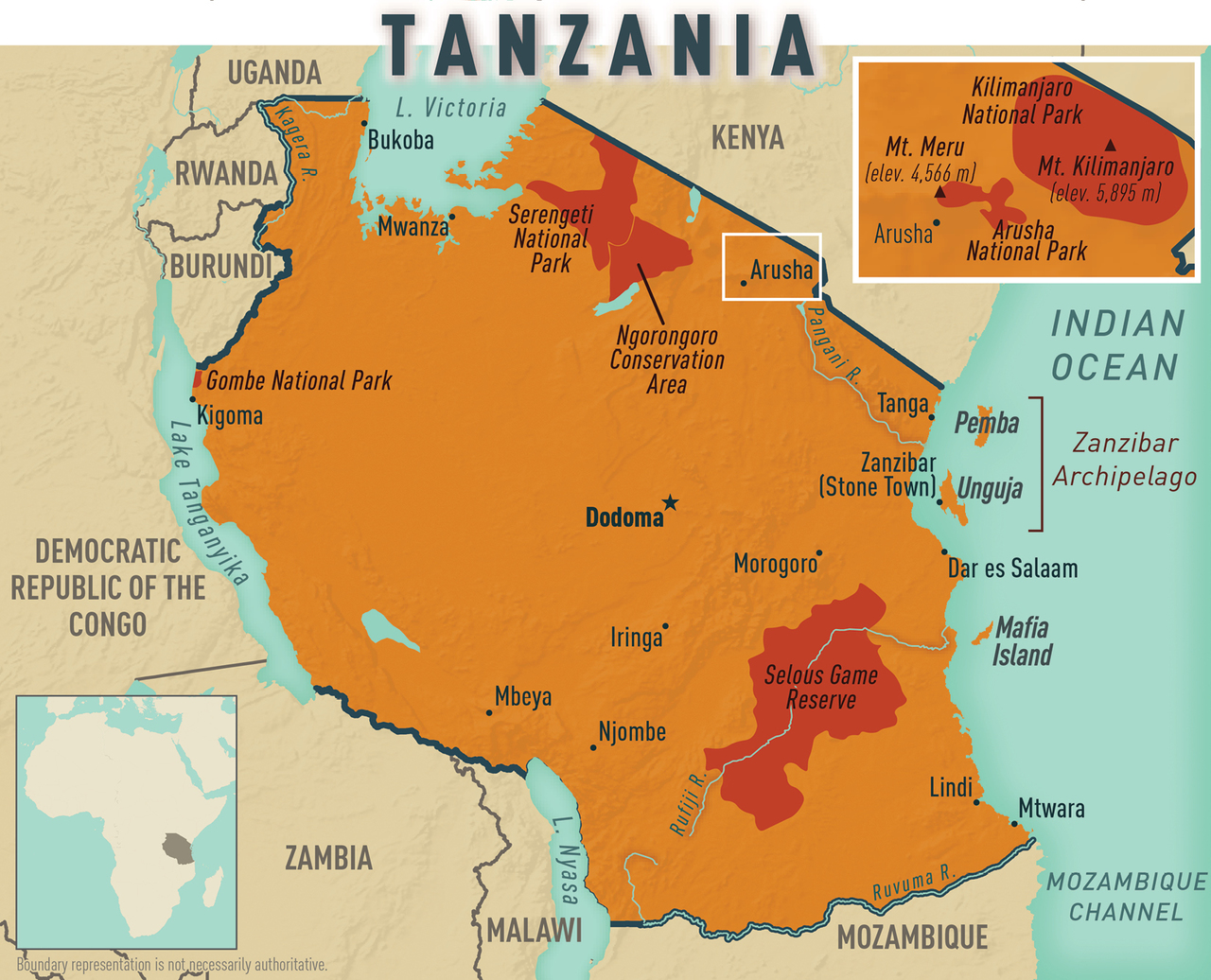Every year, malaria claims the lives of over 400,000 people worldwide, with Tanzania being one of the hardest-hit countries. The disease remains a major public health challenge, especially in rural areas where access to healthcare is limited. Despite efforts to combat it, malaria transmission continues to occur at high rates.
The history of malaria in Tanzania is tied to the country’s climate and geographical location, which create ideal breeding grounds for mosquitoes. In 2020, Tanzania reported over 7.7 million cases of malaria, underscoring the severity of the issue. Strategies such as the distribution of insecticide-treated bed nets and increased public awareness campaigns have shown promise in addressing this persistent problem.

Assessing the Risk Level of Malaria in Tanzania
Malaria remains a significant health risk in Tanzania, particularly in rural areas. The warm, humid climate provides an ideal breeding ground for mosquitoes. Transmission rates are higher during the rainy season when stagnant waters are more prevalent. According to the article here, proper precautions can reduce the risk but not entirely eliminate it. Most cases are found in children under five and pregnant women who are more susceptible.
Access to healthcare varies, affecting the risk levels across different regions. Urban areas like Dar es Salaam often have better healthcare facilities and mosquito control measures. Rural regions, on the other hand, may lack sufficient healthcare resources, making malaria more dangerous there. Rural communities also have less access to preventive measures like insecticide-treated nets. This disparity increases the risk of severe malaria cases in those areas.
Efforts to combat malaria in Tanzania include distributing bed nets and providing anti-malarial medications. The government and international organizations have been working to improve healthcare infrastructure. They aim to provide more resources to rural areas, but challenges still exist. Preventive measures like indoor residual spraying and community education are also crucial. According to the article this post, these efforts have seen some success though more work is needed.
A key part of reducing malaria risk involves educating the public on prevention. This includes knowing when to seek medical help and how to use bed nets. Schools and community centers often host informational sessions. Additionally, travel advisories help inform tourists about the risk. These measures collectively contribute to a gradual decline in malaria cases.
Factors influencing malaria transmission rates in different regions
Numerous factors influence malaria transmission rates across Tanzania. One critical factor is the climate, as warmer temperatures and high humidity create favorable conditions for mosquito breeding. Rainfall is also crucial; more rain leads to more stagnant water where mosquitoes can lay eggs. Seasonal changes can significantly impact these rates. Regions with heavy rainfall generally see increased transmission during rainy seasons.
Geographical variations also play a role in malaria transmission. Coastal areas with mangroves and swamps tend to have higher mosquito populations. In contrast, highland regions like those near Mount Kilimanjaro generally have lower mosquito populations. Rivers and lakes, such as those found around Lake Victoria, can be breeding hotspots. The varying landscapes contribute to the differing risk levels in these areas.
Human activities further influence malaria rates. Deforestation and urbanization can create new breeding sites by altering landscapes. Agricultural practices that involve irrigation also provide more standing water. These changes can inadvertently increase mosquito populations. Public health initiatives must consider these activities to tailor effective interventions.
Access to healthcare also affects transmission rates. Urban areas typically have better healthcare facilities and more preventive measures. Rural areas often lack these resources, making them more vulnerable. Efforts to distribute insecticide-treated bed nets and provide regular health check-ups help mitigate these risks. Educating communities on using these resources is essential for reducing malaria cases.
Current Strategies and Challenges in Malaria Prevention
Current malaria prevention strategies in Tanzania focus on several key areas. The distribution of insecticide-treated bed nets is one of the primary methods. These nets help protect people while they sleep, reducing the likelihood of mosquito bites. Indoor residual spraying is another effective strategy. This involves coating the walls of homes with insecticides to kill mosquitoes.
Despite these efforts, numerous challenges persist in combating malaria. One significant issue is the development of insecticide resistance among mosquitoes. This resistance reduces the effectiveness of bed nets and indoor spraying. Limited healthcare access in rural areas also poses a challenge. People in these regions may have difficulty obtaining preventive measures and treatment.
Education and community involvement are crucial in malaria prevention. Local education campaigns aim to inform people about the importance of using bed nets and preventing mosquito breeding. However, reaching remote communities can be difficult. Collaboration with local leaders and organizations is essential for success. Community health workers play a critical role in spreading awareness and providing resources.
Funding is another significant challenge in malaria prevention efforts. Consistent financial support is required to maintain the supply of bed nets, insecticides, and medications. International organizations often provide aids, but long-term sustainability is essential. Governments need to prioritize health budgets to ensure ongoing support. Successful malaria prevention relies on a combination of resources, education, and community engagement.
Future Outlook and Efforts Needed to Control Malaria in Tanzania
Looking ahead, the fight against malaria in Tanzania requires sustained and enhanced efforts. Innovative solutions like malaria vaccines are being developed and tested. A successful vaccine could significantly lower transmission rates. However, widespread distribution and acceptance of vaccines take time. These innovations must be paired with existing prevention methods for maximum effectiveness.
Investment in healthcare infrastructure is crucial for tackling malaria. More clinics and hospitals, especially in rural areas, are necessary. Adequate healthcare facilities will improve diagnosis and treatment. Strengthening healthcare systems also involves training more professionals. Skilled health workers are essential for implementing and maintaining prevention strategies.
Education remains a key area for improvement. Increasing awareness about malaria prevention is vital. Schools can integrate malaria education into their curriculum. Community outreach programs are also effective in remote areas. Informing people about preventive measures like bed nets helps in reducing cases.
Funding from international organizations and the Tanzanian government is essential. Financial support ensures the availability of resources like insecticide-treated nets, medications, and vaccines. Long-term funding plans are needed for continuous efforts. According to the article here, sustained funding aids in successful malaria control initiatives. Without financial backing, progress can be hindered.
Another critical aspect is research and development. New insecticides and treatments need to be developed. Research can help in understanding mosquito behavior and resistance patterns. Collaborations with global health organizations support these efforts. Engaging in continuous research ensures that Tanzania stays ahead in the fight against malaria.
Finally, community involvement cannot be overlooked. Empowering local communities to take charge of malaria prevention is essential. Local leaders and health workers play a crucial role. Their involvement ensures that preventive measures are accepted and practiced. Every community’s active participation is vital for achieving long-term success in malaria control.
Key Takeaways
- Malaria is a major health risk in Tanzania.
- Rural areas face higher transmission rates of malaria.
- The warm, humid climate aids mosquito breeding.
- Insecticide resistance poses significant challenges.
- Access to healthcare is crucial for malaria prevention.

